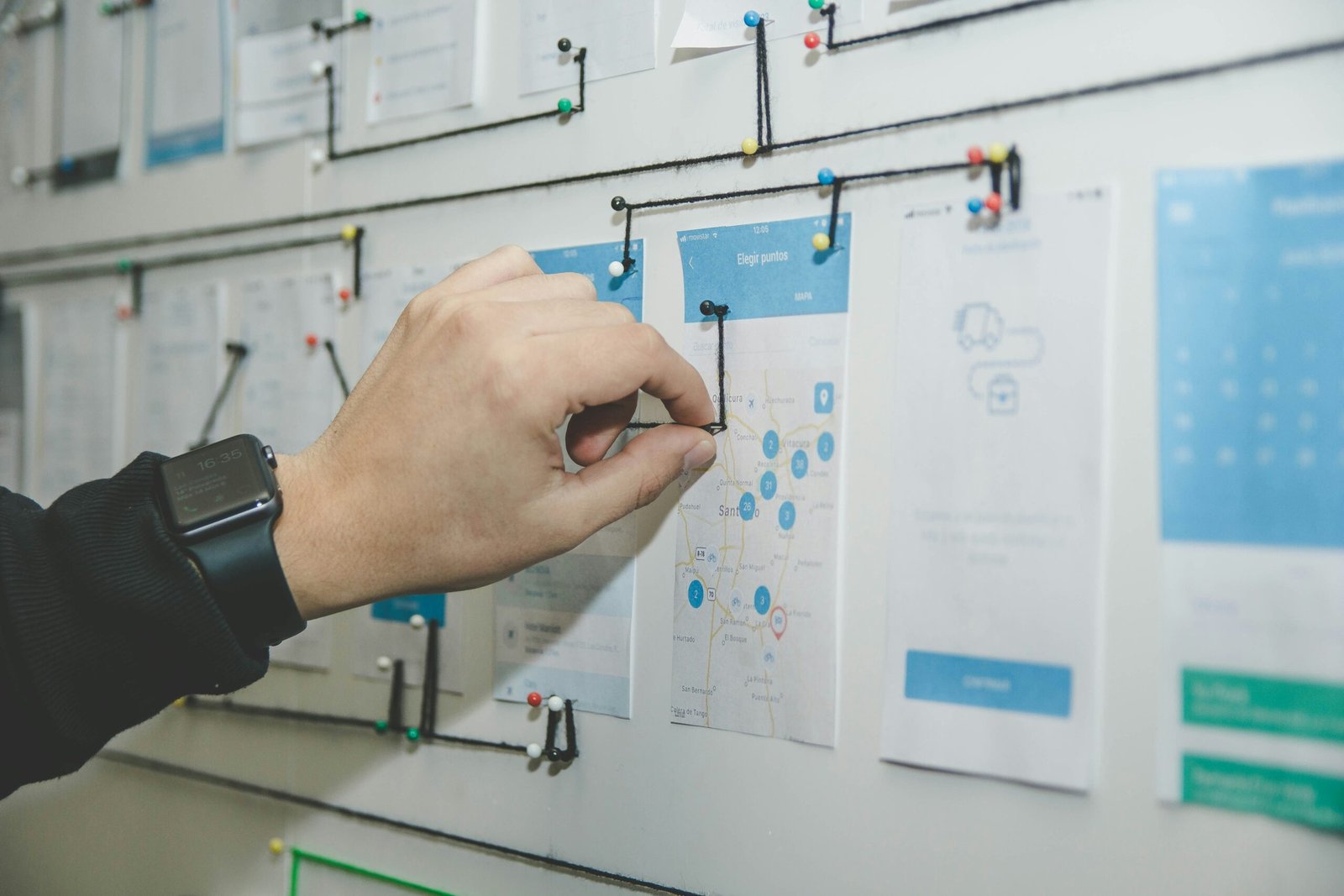Understanding User Behavior in Fashion E-commerce
In the fashion e-commerce sector, understanding user behavior is paramount to enhancing user experience and ultimately boosting conversion rates. User demographics play a crucial role in shaping purchasing decisions; factors such as age, gender, and geographic location significantly influence shopping preferences. For instance, younger users may favor fast fashion brands with frequent updates, while older shoppers might prefer sustainable options that reflect their values. Recognizing these demographics allows fashion brands to tailor their digital offerings to cater to specific audience segments effectively.
Shopping habits are another critical element of user behavior that marketers must consider. Many customers engage in extensive research before making a purchase decision, evaluating product details, reading reviews, and exploring return policies. Understanding these habits can help fashion retailers to create an informative and engaging shopping environment. By providing detailed product descriptions, high-quality images, and easily navigable return guidelines, online stores can enhance user experience and increase the likelihood of conversion.
Furthermore, motivational triggers such as urgency and exclusivity significantly influence buying behaviors. Limited-time offers, flash sales, or exclusive online collections can prompt users to make quicker purchasing decisions. Harnessing these motivational factors requires strategic placement on fashion e-commerce websites through well-designed banners and call-to-action buttons, enhancing the sense of urgency to encourage immediate engagement.
Addressing common user pain points is equally important. Studies show that lengthy check-out processes, lack of sizing information, and inadequate customer support are leading reasons for abandoned carts in fashion e-commerce. By streamlining the checkout experience and providing ample sizing charts alongside responsive customer service, brands can alleviate these pain points and meet user expectations, fostering a more positive shopping experience.
Insights drawn from UX research and case studies underline the necessity to closely monitor user behavior, as it lays the foundation for creating effective strategies to improve user engagement and drive conversions in the competitive fashion landscape.
Essential UI Design Elements to Enhance User Experience
User Interface (UI) design plays a pivotal role in shaping the shopping experience for consumers in the fashion industry. A well-crafted UI can significantly boost user engagement and conversion rates by making navigation intuitive and enjoyable. Key elements such as color schemes, typography, and layout are fundamental in creating a visually appealing environment.
Firstly, the importance of a well-thought-out color scheme cannot be overstated. Colors evoke emotions and influence decisions; thus, selecting a palette that resonates with the brand identity is essential. For instance, vibrant colors may attract a younger audience, while muted tones might appeal to more sophisticated consumers. Additionally, consistent use of color can enhance brand recognition, providing a cohesive experience across all platforms.
Typography serves another critical function in UI design. The choice of font can impact readability and the overall aesthetic of the site. Brands should opt for fonts that are not only stylish but also legible across various devices. Hierarchical typography—using different sizes and weights—effectively guides users’ attention to important information, such as call-to-action buttons or product details, enhancing their overall experience.
Additionally, streamlined navigation is essential for users to browse effortlessly through product offerings. A clear and concise menu structure, complemented by a search bar and filter options, increases the likelihood of users finding their desired products quickly. Furthermore, optimizing product pages with high-quality images that showcase items from multiple angles allows potential buyers to gain a better understanding of the products, ultimately aiding their decision-making process.
Finally, with the growing prevalence of mobile shopping, ensuring that the UI is responsive on mobile devices is vital. A mobile-friendly design not only improves user satisfaction but also enhances conversions, as more consumers rely on their smartphones for shopping. Successful fashion brands, such as ASOS and Zara, exemplify effective UI by implementing these elements seamlessly to boost user engagement and drive sales.
Effective Use of Microinteractions and Visual Feedback
Microinteractions and visual feedback play a critical role in facilitating a seamless user journey, especially in the fashion industry where user experience directly influences conversion rates. These subtle yet effective design elements can dramatically enhance user engagement by providing immediate responses to user actions, thereby making the interaction feel more intuitive. Button animations, for instance, can capture user attention and guide them toward desired actions without overwhelming them. A gently pulsing call-to-action button or a slight color change when hovered over can elevate the perceived professionalism of a website, encouraging users to engage further.
Loading indicators are another effective microinteraction that can maintain user interest while processing occurs in the background. In a sector where image-rich content is commonplace, lengthy loading times can lead to user frustration. Implementing creative loading animations can alleviate this issue, keeping users engaged and minimizing the chances of abandonment. For example, a simple fashion-related visual, such as a spinning clothing hanger, can reinforce the brand identity while serving a functional purpose. This creates an engaging experience that not only lessens perceived wait times but also enhances user satisfaction.
Furthermore, hover effects can be instrumental in crafting a more interactive shopping experience. By providing instant visual feedback, such as pop-up information or quick view options, users gain a richer understanding of products, which can bolster confidence in their purchasing decisions. It is important, however, to apply these features thoughtfully to avoid sensory overload. A balanced approach, where microinteractions support the user journey without drawing excessive attention, is essential for effective UX/UI design. Studies have demonstrated that these thoughtful design elements can lead to higher user retention and satisfaction, especially in competitive markets like fashion. By utilizing microinteractions strategically, brands can create a more enjoyable experience that encourages greater conversion rates, ultimately driving business success.
Gathering Feedback and Iterating on Design
In the highly competitive fashion industry, collecting user feedback is crucial to optimizing UX/UI design for increased conversions. Employing various methods allows brands to gain valuable insights into how users interact with their platforms. Surveys are one of the most direct ways to gather feedback from users, enabling fashion brands to ask targeted questions about their experiences, preferences, and challenges. Whether delivered through pop-ups or email campaigns, surveys can provide quick quantitative data that can shape immediate design adjustments.
Usability testing is another effective method for understanding user behavior. This qualitative approach involves observing real users as they navigate the website or application, allowing designers to identify specific areas of the interface that may cause friction or confusion. Recording sessions can provide valuable insights, revealing not only what users do but also why they behave in certain ways. By combining usability tests with robust analytical tools, brands can track conversion metrics and user behavior, pinpointing exactly where improvements can be made.
A/B testing stands out as a powerful strategy for iterating on design. This method entails creating two versions of a webpage or interface to determine which one performs better with actual users. By analyzing user responses to different design elements, such as layouts, colors, or call-to-action buttons, fashion brands can make informed design decisions that directly enhance user engagement and conversion rates.
Analyzing conversion data and user behavior metrics is integral to this iterative process. Tools like Google Analytics can shed light on user journeys and conversion funnels, allowing brands to see where drop-offs occur. Collecting this data and continually iterating based on user feedback creates a cycle of testing, learning, and refining. Ultimately, by prioritizing user insights and adapting their strategies, fashion brands can better meet the evolving needs of their customers, resulting in sustained growth and increased conversions.


